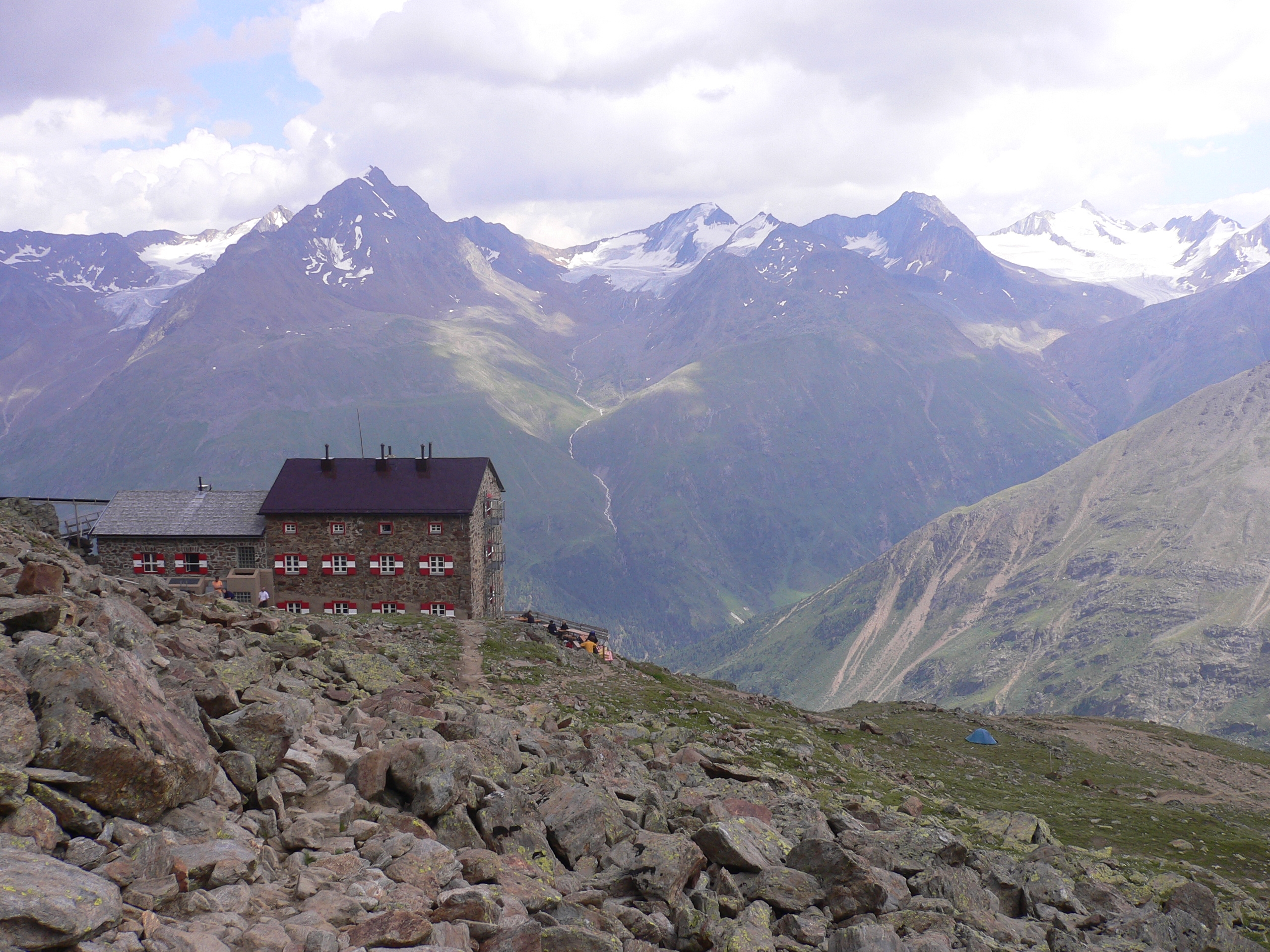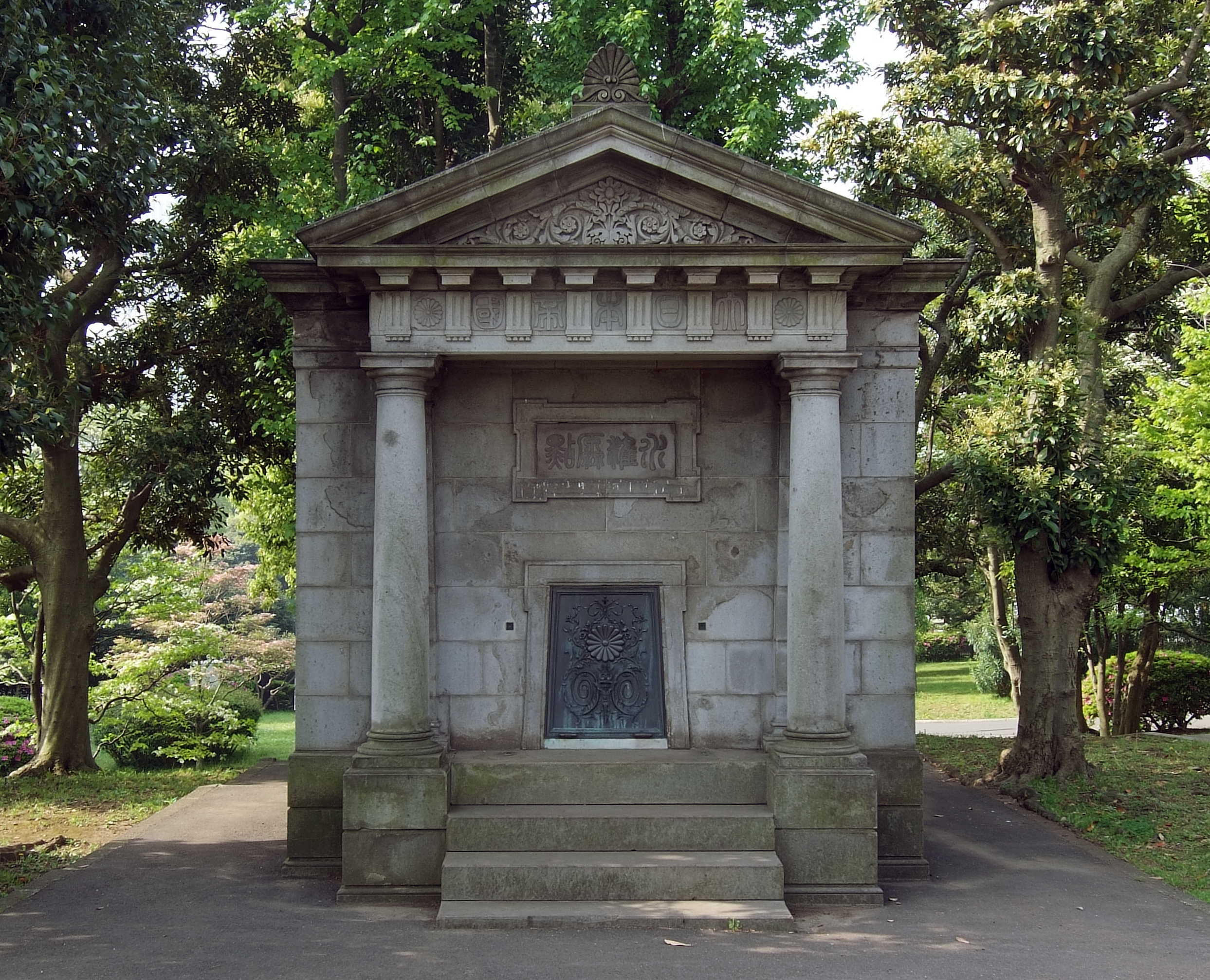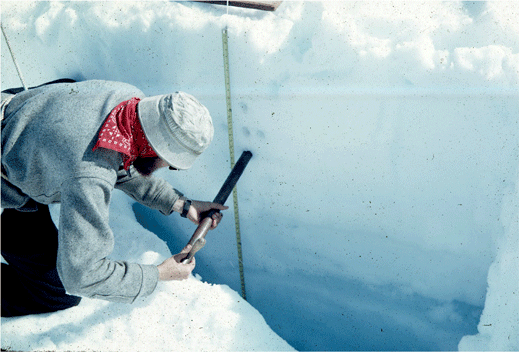|
Mount Shirouma
is a peak in the Hida Mountains range of the Japanese Alps, located in Nagano Prefecture and Toyama Prefecture, central Honshu, Japan. Geography Mount Shirouma is the 26th-tallest mountain in Japan. At , it is the highest peak in the Hakuba section of the Hida Mountains, and one of the top "to climb" peaks for Japanese hikers. It is also one of the few peaks in Japan with year-round snow fields (Firn), in the . It is located within the Chūbu-Sangaku National Park. Mount Shirouma is one of the landmark 100 Famous Japanese Mountains. Alpine plants are also abundant on Shirouma in the summer. Hiking There are several popular hiking routes, including the Shirouma Dai Sekkei. This route begins at the Sarukura Lodge (猿倉荘) (1,250m) in the village of Hakuba, and takes approximately 6 hours to reach the summit. Another popular route is via Tsugaike Panorama Way, Hakuba Ooike, and Mount Korenge (2,766m). There are two lodges near the summit, Hakuba Lodge (白馬山荘) (2 ... [...More Info...] [...Related Items...] OR: [Wikipedia] [Google] [Baidu] |
Mountain Hut
A mountain hut is a building located high in the mountains, generally accessible only by foot, intended to provide food and shelter to mountaineers, climbers and hikers. Mountain huts are usually operated by an Alpine Club or some organization dedicated to hiking or mountain recreation. They are known by many names, including alpine hut, mountain shelter, mountain refuge, mountain lodge, and mountain hostel. It may also be called a refuge hut, although these occur in lowland areas (e.g. lowland forests) too. Mountain huts can provide a range of services, starting with shelter and simple sleeping berths. Some, particularly in remote areas, are not staffed, but others have staff which prepare meals and drinks and can provide other services, including providing lectures and selling clothing and small items. Mountain huts usually allow anybody to access their facilities, although some require reservations. While shelters have long existed in mountains, modern hut systems date ba ... [...More Info...] [...Related Items...] OR: [Wikipedia] [Google] [Baidu] |
Geospatial Information Authority
The , or GSI, is the national institution responsible for surveying and mapping the national land of Japan. The former name of the organization from 1949 until March 2010 was Geographical Survey Institute; despite the rename, it retains the same initials. It is an extraordinary organ of the Ministry of Land, Infrastructure, Transport and Tourism. Its main offices are situated in Tsukuba City of Ibaraki Prefecture. It also runs a museum, situated in Tsukuba, the Science Museum of Map and Survey. Earthquake Precursor Prediction Research Stationary MT monitoring systems have been installed in Japan since April 1996, providing a continuous recording of MT signals at the Mizusawa Geodetic Observatory and the Esashi Station of the GSI. These stations measure fluctuations in the earth's electromagnetic field that correspond with seismic activity. The raw geophysical time-series data from these monitoring stations is freely available to the scientific community, enabling further stud ... [...More Info...] [...Related Items...] OR: [Wikipedia] [Google] [Baidu] |
Japan Alps
The is a series of mountain ranges in Japan which bisect the main island of Honshu. The peaks that tower over central Honshu have long been the object of veneration and pilgrimage. These mountains had long been exploited by local people for raw materials, including timber, fuel, fertilizer, fodder, meat, minerals, and medicines. Most visitors came to the mountain for pilgrimage, especially to the Buddhist temple and the sacred peak of Mount Tate. The name was coined by English archaeologist William Gowland, and later popularized by Reverend Walter Weston (1861–1940), an English missionary for whom a memorial plaque is located at Kamikōchi, a tourist destination known for its alpine climate. When Gowland coined the phrase, he was only referring to the Hida Mountains, but it now also applies to the Kiso Mountains and Akaishi Mountains. History The Japanese Alps has a long history before William Gowland established this name. The Japanese Alps have been used as a place of asc ... [...More Info...] [...Related Items...] OR: [Wikipedia] [Google] [Baidu] |
Hakuba
is a village located in Nagano Prefecture, Japan. , the village had an estimated population of 9,007 in 4267 households, and a population density of 48 persons per km2. The total area of the village is . Hakuba is an internationally renowned ski resort town in the northern Japan Alps. As the surrounding valley has an annual snow fall of over 11 meters, it is the central hub for 10 ski resorts with more than 200 runs. The village was the main event venue for 1998 Winter Olympics (Alpine, Ski Jump, Crosscountry). Geography Hakuba is located in a mountain basin in far northwestern Nagano Prefecture, bordered by Toyama Prefecture to the west. The 2900 meter Tateyama Mountains border the village to the west. Much of the village is within the borders of the Chūbu-Sangaku National Park. Surrounding municipalities *Nagano Prefecture ** Otari ** Nagano ** Ōmachi ** Ogawa * Niigata Prefecture ** Itoigawa * Toyama Prefecture ** Kurobe ** Asahi Climate The village has humi ... [...More Info...] [...Related Items...] OR: [Wikipedia] [Google] [Baidu] |
Alpine Plant
Alpine plants are plants that grow in an alpine climate, which occurs at high elevation and above the tree line. There are many different plant species and taxa that grow as a plant community in these alpine tundra. These include perennial grasses, sedges, forbs, cushion plants, mosses, and lichens.. Alpine plants are adapted to the harsh conditions of the alpine environment, which include low temperatures, dryness, ultraviolet radiation, wind, drought, poor nutritional soil, and a short growing season. Some alpine plants serve as medicinal plants. Ecology Alpine plants occur in a tundra: a type of natural region or biome that does not contain trees. Alpine tundra occurs in mountains worldwide. It transitions to subalpine forests below the tree line; stunted forests occurring at the forest-tundra ecotone are known as ''Krummholz''. With increasing elevation, it ends at the snow line where snow and ice persist through summer, also known as the Nival Zone. Alpine plants are ... [...More Info...] [...Related Items...] OR: [Wikipedia] [Google] [Baidu] |
Ministry Of The Environment (Japan)
The is a Cabinet-level ministry of the government of Japan responsible for global environmental conservation, pollution control, and nature conservation. The ministry was formed in 2001 from the sub-cabinet level Environmental Agency established in 1971. The Minister of the Environment is a member of the Cabinet of Japan and is chosen by the Prime Minister, usually from among members of the Diet. In March 2006, the then-Minister of the Environment Yuriko Koike, created a ''furoshiki'' cloth to promote its use in the modern world. In August 2011, the Cabinet of Japan approved a plan to establish a new energy watchdog under the Environment Ministry, and the Nuclear Regulation Authority was founded on September 19, 2012. Organization * Minister's Secretariat (大臣官房) * (総合環境政策統括官) * Global Environment Bureau (地球環境局) * Environment Management Bureau (水・大気環境局) * Nature Conservation Bureau (自然環境局) * (環境再生・資� ... [...More Info...] [...Related Items...] OR: [Wikipedia] [Google] [Baidu] |
Chūbu-Sangaku National Park
is a national park in the Chūbu region of Japan. It was established around the Hida Mountains and encompasses parts of Nagano, Gifu, Toyama and Niigata prefectures. It was designated a national park on December 4, 1934, along with Daisetsuzan National Park, Akan National Park, Nikkō National Park, and Aso Kujū National Park. Geography The Hida Mountains, or Northern Alps make up the majority of the park. There are many points in the Hida Mountains within the park that are above , including Kamikōchi, Mount Norikura, Mount Hotaka and Mount Tate. The park is home to numerous gorges, ravines, and dramatically shaped escarpments, as well as the headwater of Japan's longest river, the Shinano River, which begins here as the Azusa River on the southeastern slope of Mount Yari. [...More Info...] [...Related Items...] OR: [Wikipedia] [Google] [Baidu] |
Firn
__NOTOC__ Firn (; from Swiss German "last year's", cognate with ''before'') is partially compacted névé, a type of snow that has been left over from past seasons and has been recrystallized into a substance denser than névé. It is ice that is at an intermediate stage between snow and glacial ice. Firn has the appearance of wet sugar, but has a hardness that makes it extremely resistant to shovelling. Its density generally ranges from 0.35 g/cm3 to 0.9 g/cm3, and it can often be found underneath the snow that accumulates at the head of a glacier. Snowflakes are compressed under the weight of the overlying snowpack. Individual crystals near the melting point are semiliquid and slick, allowing them to glide along other crystal planes and to fill in the spaces between them, increasing the ice's density. Where the crystals touch they bond together, squeezing the air between them to the surface or into bubbles. In the summer months, the crystal metamorphosis can occur ... [...More Info...] [...Related Items...] OR: [Wikipedia] [Google] [Baidu] |
Honshu
, historically called , is the largest and most populous island of Japan. It is located south of Hokkaidō across the Tsugaru Strait, north of Shikoku across the Inland Sea, and northeast of Kyūshū across the Kanmon Straits. The island separates the Sea of Japan, which lies to its north and west, from the North Pacific Ocean to the south and east. It is the seventh-largest island in the world, and the second-most populous after the Indonesian island of Java. Honshu had a population of 104 million , constituting 81.3% of the entire population of Japan, and is mostly concentrated in the coastal areas and plains. Approximately 30% of the total population resides in the Greater Tokyo Area on the Kantō Plain. As the historical center of Japanese cultural and political power, the island includes several past Japanese capitals, including Kyōto, Nara and Kamakura. Much of the island's southern shore forms part of the Taiheiyō Belt, a megalopolis that spans several o ... [...More Info...] [...Related Items...] OR: [Wikipedia] [Google] [Baidu] |
Japanese Alps
The is a series of mountain ranges in Japan which bisect the main island of Honshu. The peaks that tower over central Honshu have long been the object of veneration and pilgrimage. These mountains had long been exploited by local people for raw materials, including timber, fuel, fertilizer, fodder, meat, minerals, and medicines. Most visitors came to the mountain for pilgrimage, especially to the Buddhist temple and the sacred peak of Mount Tate. The name was coined by English archaeologist William Gowland, and later popularized by Reverend Walter Weston (1861–1940), an English missionary for whom a memorial plaque is located at Kamikōchi, a tourist destination known for its alpine climate. When Gowland coined the phrase, he was only referring to the Hida Mountains, but it now also applies to the Kiso Mountains and Akaishi Mountains. History The Japanese Alps has a long history before William Gowland established this name. The Japanese Alps have been used as a place of ... [...More Info...] [...Related Items...] OR: [Wikipedia] [Google] [Baidu] |
Hida Mountains
The , or , is a Japanese mountain range which stretches through Nagano, Toyama and Gifu prefectures. A small portion of the mountains also reach into Niigata Prefecture. William Gowland coined the phrase "Japanese Alps" during his time in Japan, but he was only referring to the Hida Mountains when he used that name. The Kiso and Akaishi mountains received the name in the ensuing years. Geography The layout of the Hida Mountains forms a large Y-shape. The southern peaks are the lower portion of the Y-shape, with the northern peaks forming two parallel bands separated by a deep V-shaped valley. It is one of the steepest V-shaped valleys in Japan. The Kurobe Dam, Japan's largest dam, is an arch dam located in the Kurobe Valley in the central area of the mountains. The western arm of mountains, also known as the Tateyama Peaks (立山連峰 ''Tateyama Renpō''), are dominated by Mount Tsurugi and Mount Tate. The eastern arm, known as the Ushiro Tateyama Peaks (後立山連� ... [...More Info...] [...Related Items...] OR: [Wikipedia] [Google] [Baidu] |
Geospatial Information Authority Of Japan
The , or GSI, is the national institution responsible for surveying and mapping the national land of Japan. The former name of the organization from 1949 until March 2010 was Geographical Survey Institute; despite the rename, it retains the same initials. It is an extraordinary organ of the Ministry of Land, Infrastructure, Transport and Tourism. Its main offices are situated in Tsukuba City of Ibaraki Prefecture. It also runs a museum, situated in Tsukuba, the Science Museum of Map and Survey. Earthquake Precursor Prediction Research Stationary MT monitoring systems have been installed in Japan since April 1996, providing a continuous recording of MT signals at the Mizusawa Geodetic Observatory and the Esashi Station of the GSI. These stations measure fluctuations in the earth's electromagnetic field that correspond with seismic activity. The raw geophysical time-series data from these monitoring stations is freely available to the scientific community, enabling further s ... [...More Info...] [...Related Items...] OR: [Wikipedia] [Google] [Baidu] |







